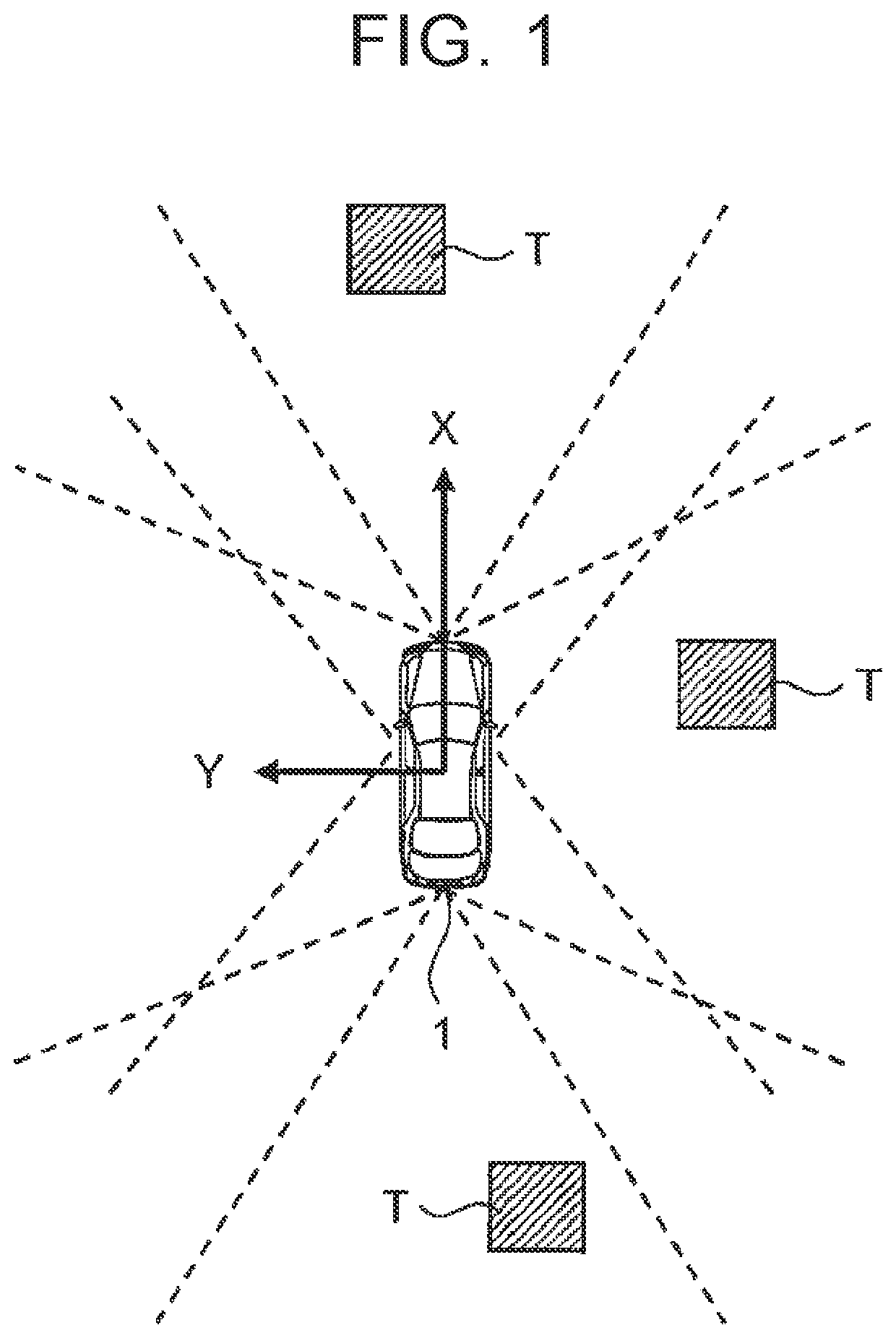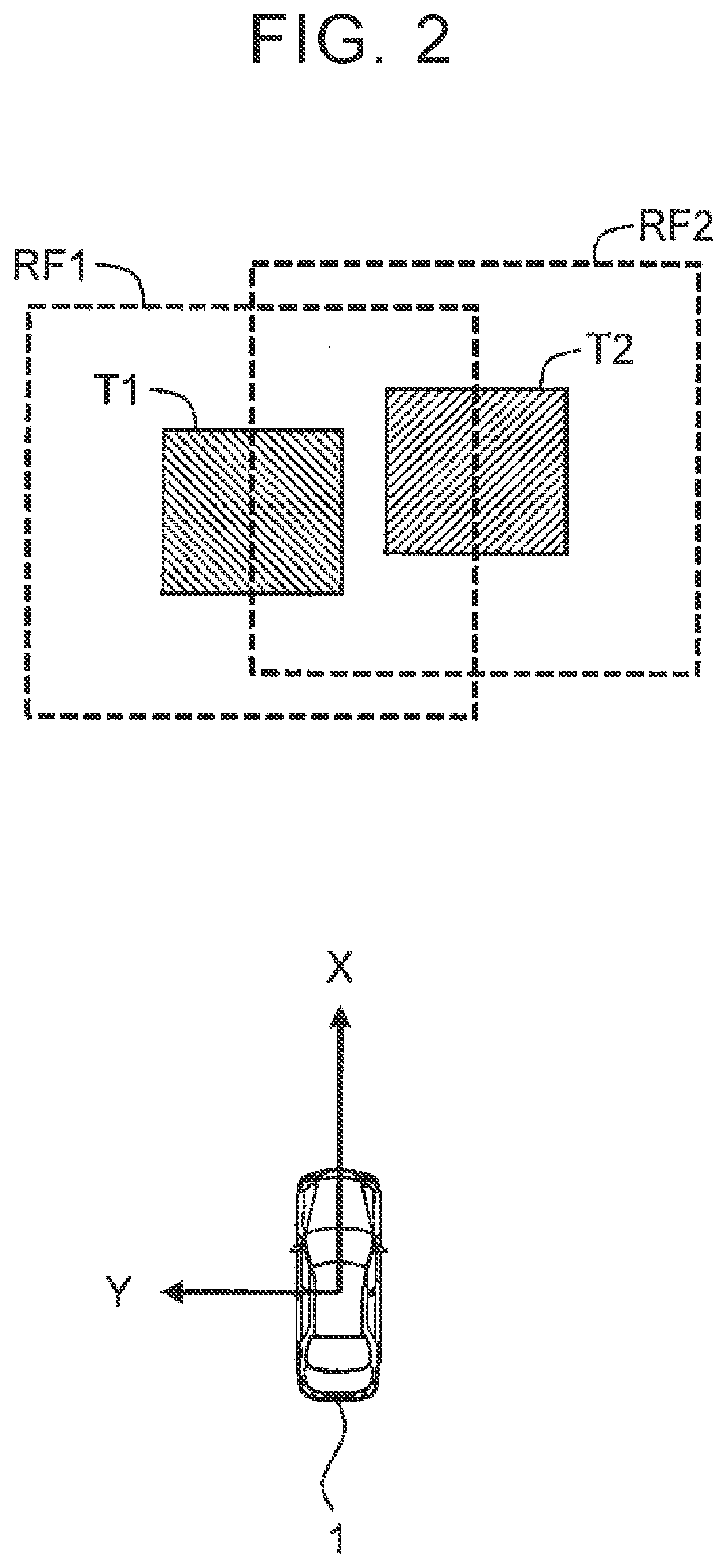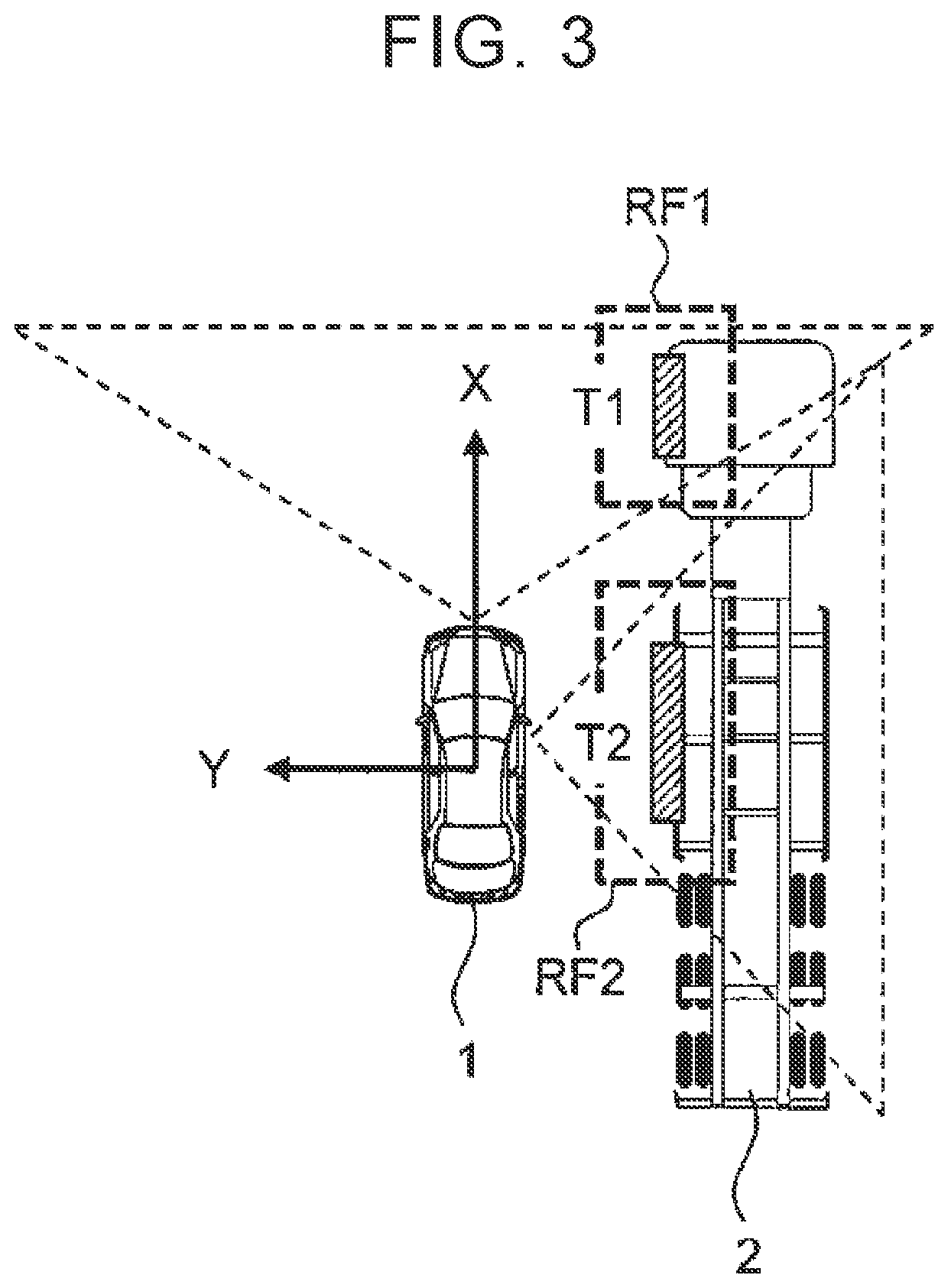Object recognition device
a technology of object recognition and object distance, which is applied in the direction of vehicle position/course/altitude control, using reradiation, instruments, etc., can solve the problems of reducing the object recognition accuracy, and achieve the effect of increasing the accuracy of the integration determination processing based on the integration determination distance and increasing the object recognition accuracy
- Summary
- Abstract
- Description
- Claims
- Application Information
AI Technical Summary
Benefits of technology
Problems solved by technology
Method used
Image
Examples
first example
5-1. First Example
[0078]FIG. 15 is a flowchart showing a first example of processing in step S200.
[0079]In step S210, the processor 110 initially sets the integration determination distance DF (integration determination range RF) for the detected object T. More specifically, the processor 110 refers to the object information 300 and, based on the detection position of the object T obtained by referring to the object information 300, initially sets the integration determination distance DF. The detection position used as the base is the base point. For example, the point nearest to the vehicle 1 is used as the base point. As another example, a point that is stably detected (tracked) over a certain period of time may be used as the base point. The initially set value of the integration determination distance DF may be set as a constant value or may be set according to the detection range of the object T.
[0080]In step S250, the processor 110 estimates the traveling direction P of the o...
second example
5-2. Second Example
[0082]FIG. 16 is a flowchart showing a second example of processing in step S200. A duplicate description of those steps included in the first example will be omitted as appropriate. Step S210 and step S250 are the same as those in the first example.
[0083]In step S220, the processor 110 calculates the absolute speed V of the object T based on the sensor detection information 200. The absolute speed V of the object T is calculated from the speed of the vehicle 1 and the relative speed of the object T. The speed of the vehicle 1 is obtained from the vehicle state information.
[0084]In the second example, step S260A is performed instead of step S260. In step S260A, the processor 110 increases the integration determination distance DF along the traveling direction P of the object T. At this time, the processor 110 increases the increase amount of the integration determination distance DF along the traveling direction P according to the absolute speed V of the object T....
third example
5-3. Third Example
[0087]In the second example described above, the increase amount of the integration determination distance DF along the traveling direction P increases according to the absolute speed V of the object T. However, in some cases, the reliability of the calculated absolute speed V is low. For example, in FIG. 18, the object TX is located near the boundary of the field of view of the sensor. The reliability of the absolute speed V calculated (estimated) for such an object TX is low. When the integration determination distance DF is set based on the absolute speed V with low reliability, the accuracy of the integration determination distance DF is not increased but decreased. To address this problem, the setting method of the integration determination distance DF is changed in the third example according to the reliability of the absolute speed V.
[0088]FIG. 19 is a flowchart showing a third example of processing in step S200. A duplicate description of those steps includ...
PUM
 Login to View More
Login to View More Abstract
Description
Claims
Application Information
 Login to View More
Login to View More - R&D
- Intellectual Property
- Life Sciences
- Materials
- Tech Scout
- Unparalleled Data Quality
- Higher Quality Content
- 60% Fewer Hallucinations
Browse by: Latest US Patents, China's latest patents, Technical Efficacy Thesaurus, Application Domain, Technology Topic, Popular Technical Reports.
© 2025 PatSnap. All rights reserved.Legal|Privacy policy|Modern Slavery Act Transparency Statement|Sitemap|About US| Contact US: help@patsnap.com



